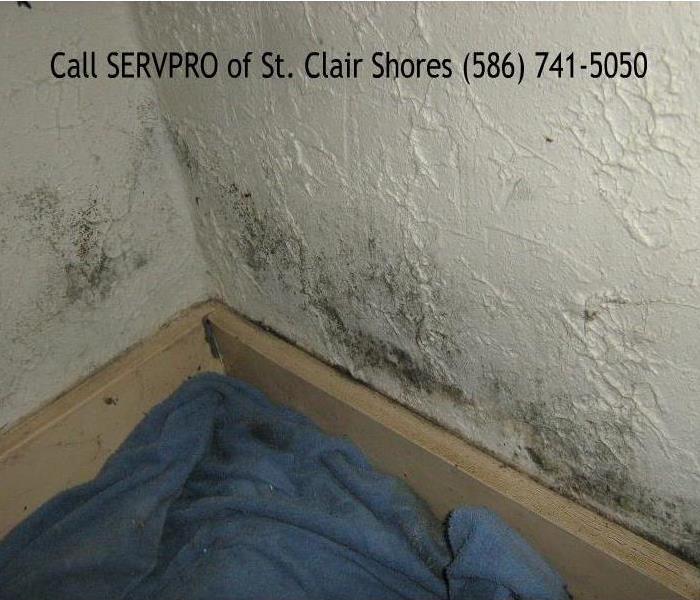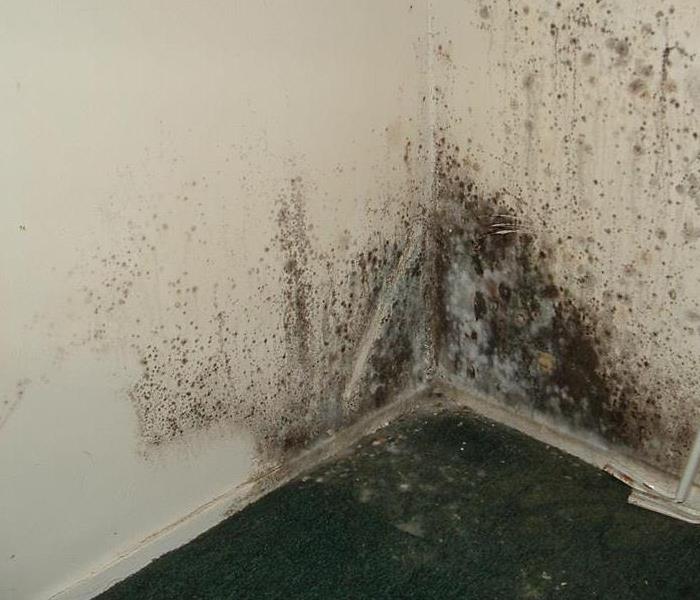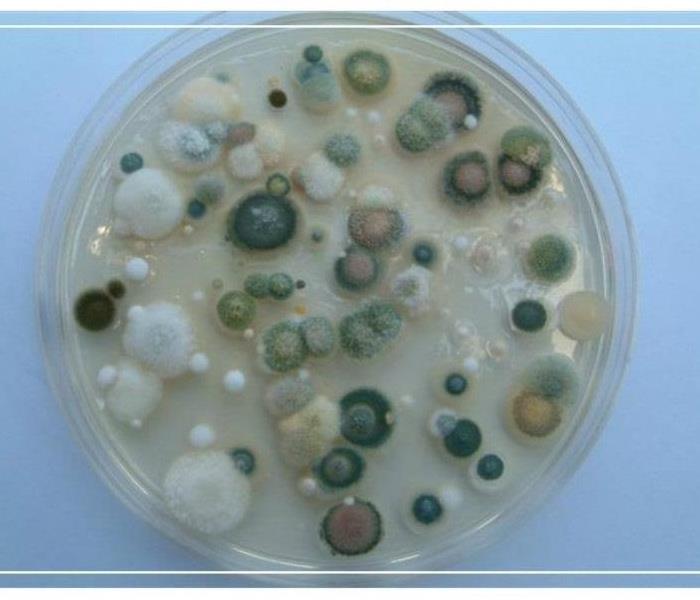Archived Mold Remediation Blog Posts
Comprehensive Remediation Process Restores Mold Damage in Eastpointe
6/6/2023 (Permalink)
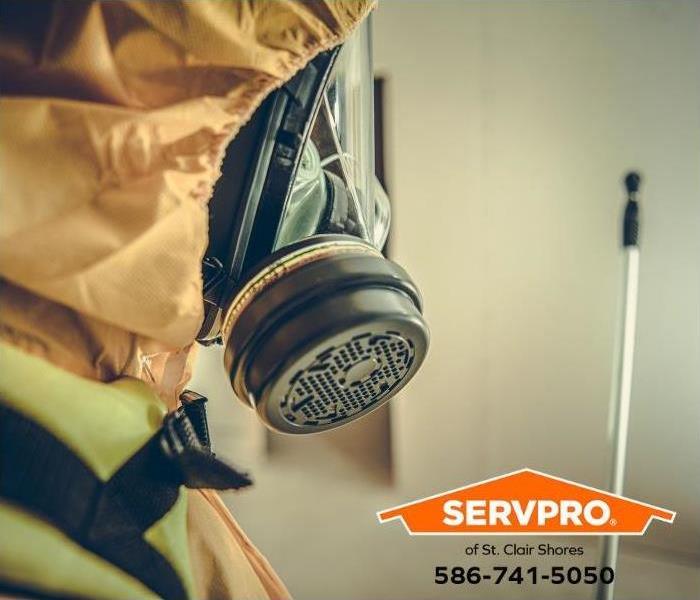 We are leaders in mold removal services in Macomb County.
We are leaders in mold removal services in Macomb County.
When you discover mold growing in your home in Eastpointe it is usually a symptom of hidden water damage. Our local in St. Clair Shores team follow these seven steps when restoring mold damage:
- Emergency Contact
We’ll ask you questions to determine the necessary equipment and resources.
- Inspection and Mold Damage Assessment
We follow local and state laws regarding inspection and documentation based on your unique situation.
- Mold Containment
We may use advanced containment procedures like negative air chambers to isolate the contaminated area with physical barriers and negative air pressure to keep the mold spores from spreading during the cleanup process.
- Air Filtration
We utilize powerful “air scrubbers” and HEPA vacuums to prevent the spread of these mold spores while mold remediation is in process.
- Removing Mold and Mold-Infested Materials
We use antifungal and antimicrobial treatments to eliminate mold colonies and to help prevent new colonies from forming. Removing and disposing of mold-infested porous materials may be necessary to remediate heavy mold growth.
- Cleaning Contents
We clean your furniture, decorative items, curtains, and other restorable items affected by mold. We’re also trained to remove odors and deodorization using fogging equipment.
- Restoration
Restoration may involve minor repairs or it may require the reconstruction of various areas or rooms in a home or business.
Call Us Today!
When your home or commercial business in Eastpointe has mold damage, our local team in St. Clair Shores is Here to Help. ® Call us today at 586-741-5050.
Franchises are independently owned and operated.
How Can I Keep Mold from Growing in My Warren Home?
5/16/2023 (Permalink)
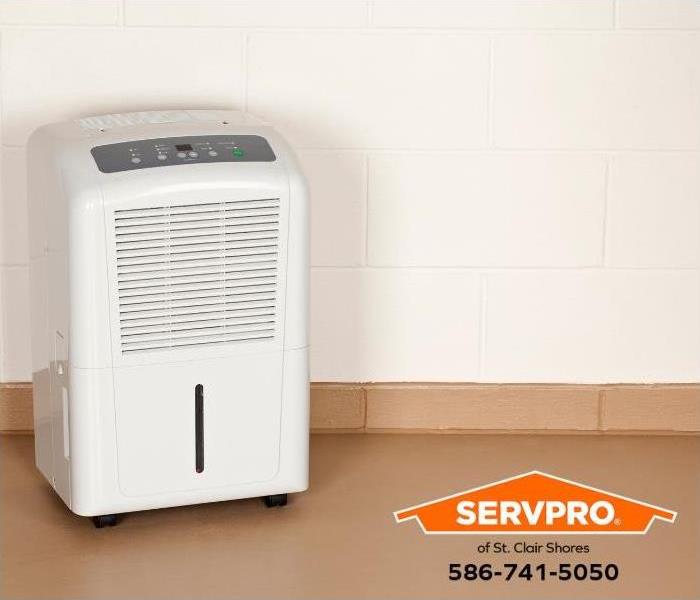 We are leaders in mold damage restoration services in Macomb County.
We are leaders in mold damage restoration services in Macomb County.
Our local team in St. Clair Shores has been restoring mold damage in Warren for many years. The State of Michigan website offers many helpful resources about locating and preventing mold from growing in a home or building. Here is some information to prevent mold from growing in your home:
How do I stop mold from growing in my home?
For mold to grow, the spores need about two days of dampness in order to put down good “roots.” If you discover a leak or a large spill, dry the area right away using towels to soak up as much water as possible. Then use a fan, if you have one, to blow air over the area to dry it completely.
Here are some other things you can do:
- Always use the vent fan on your stove when cooking
- Turn on the vent fan in your bathroom when taking a shower
- If you have a damp basement or live in a basement apartment, use a dehumidifier
Call Us Today!
When you discover mold growing in your Warren home or commercial business, our local team in St. Clair Shores is Here to Help. ® We’ll restore your mold damage “Like it never even happened.” Call us today at 586-741-5050.
Franchises are independently owned and operated.
Ventilate your Home to Prevent Mold
10/9/2018 (Permalink)
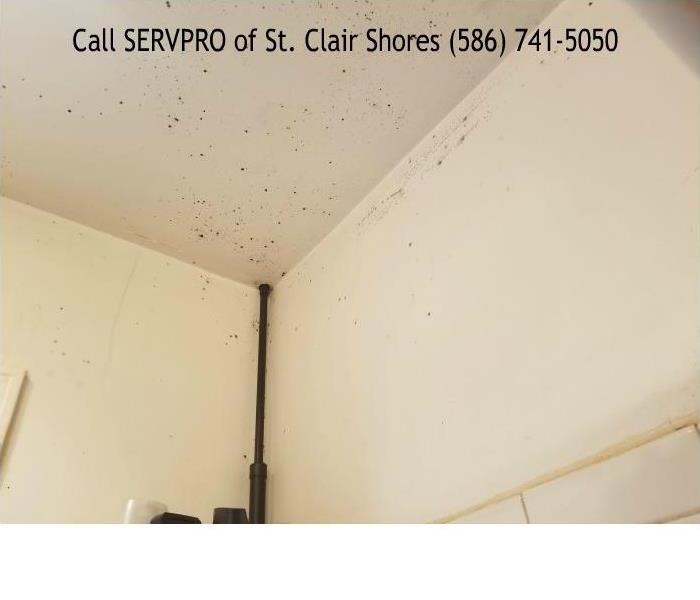 Got Mold?
Got Mold?
Ventilate your Home to Prevent Mold
Mold can cause structural damage to your home and intensify health issues such as allergies and asthma. Improving the ventilation in your home is one way to help in mold prevention.
How to Prevent Mold
Mold thrives in warm, damp settings. The best way to prevent it is to eliminate the conditions that contribute to mold:
- Repair leaking pipes, improperly sealed windows, and other areas where moisture can collect.
- Inspect your basement and attic for dampness often.
- Improve your home’s ventilation.
Home Ventilation Methods
The fastest way to improve your home’s ventilation is to open windows when it is not humid outside. Make sure there are no tears or gaps in window screens. When it is not practical to open the windows, install fans in rooms that may grow mold, and use them on occasions when there is the possibility of moisture collecting, such as:
- In the bathroom when showering
- In the kitchen while running the dishwasher
- In the laundry room when the washer and dryer are running
- In the attic when the relative humidity is high
- In the basement during and after a rainstorm
Professional Mold Inspection
If you already have a mold problem, SERVPRO of St. Clair Shores can help. We will inspect your property, prepare a remediation plan, and work with your insurance agent to handle the billing aspect. During the mold inspection, we can advise on what steps you should take to improve your home’s ventilation and prevent mold growing in the future. Call SERVPRO of St. Clair Shores for a mold inspection (586)741-5050.
What Is Black Mold?
10/9/2018 (Permalink)
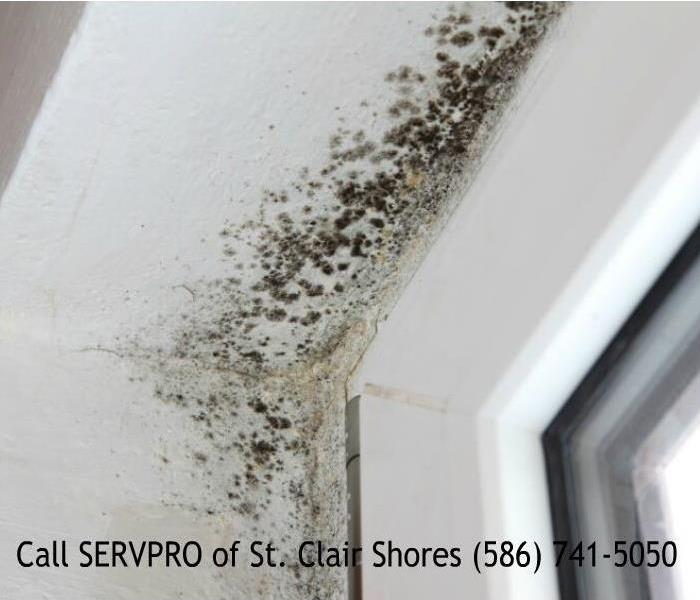 SERVPRO of St. Clair Shores Can Help with Mold!
SERVPRO of St. Clair Shores Can Help with Mold!
What Is Black Mold?
You may have seen sensational news reports that warn about the dangers of “black mold” or “toxic mold”. These reports can be alarming and confusing so it’s beneficial to get the facts to better understand mold.
Stachybotrys chartarum is the type of mold often called black mold, and it does produce allergens and irritants. However, many types of mold can produce allergens and irritants. Treat any mold with caution – stay out of affected areas and don’t touch or disturb the mold.
Learn more about mold and what to do until help arrives by visiting Mold Damage Tips.
How Do I Tell If It’s Black Mold?
Since many types of mold can cause reactions, you should contact us regardless of the color or type of mold. In many instances, multiple types of mold may exist in the same house or structure. If you suspect you have a mold problem, contact SERVPRO of St. Clair Shores immediately.
If You See Signs of Mold, Call Us Today – (586) 741-5050
Why Do I Need Mold Testing if I Already Know I Have a Mold Problem?
5/8/2018 (Permalink)
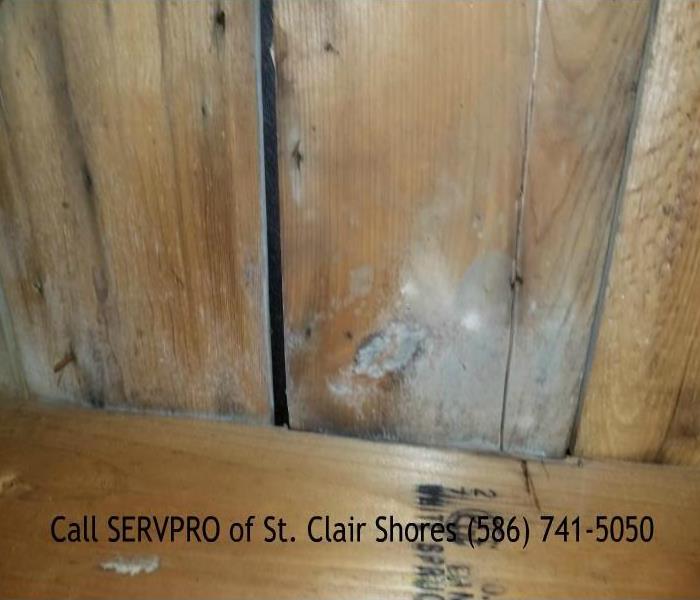 Got Mold in Roseville, MI?
Got Mold in Roseville, MI?
Why do I need mold testing if I already know I have a mold problem?
Most certified, reputable mold remediation contractors will require you to have a mold inspection with an air sample analysis and corresponding remediation plan prior to providing you with an estimate. The mold report will define the extent and severity of the problem and what the proper remediation plan, procedures and protocols should be from an independent, unbiased person (environmental consultant). It gives a starting point of the environment as it relates to airborne mold spore counts so we can gauge the effectiveness of the remediation contractor at the end of the project for the post-remediation verification aka clearance.
The Mold Remediation Process
Every mold damage scenario is different, and requires a unique solution, but the general mold remediation process stays the same. The steps listed below illustrate our “typical” process:
- Emergency Contact – (586) 741-5050
- Inspection and Mold Damage Assessment
- Mold Containment
- Air Filtration
- Removing Mold and Mold-Infested Materials
- Cleaning Contents and Belongings
- Restoration
At SERVPRO of St. Clair Shores We are Always Here To Help! (586) 741-5050
Mold Myths and Mold Remediation for Your Property
4/27/2018 (Permalink)
SERVPRO Answers the Call for Mold Remediation
Many, if not most homeowners in St. Clair Shores will have to deal with a mold infestation at some point. This being the case, it's important for residential property owners to get the facts about mold remediation. Homeowners are inundated with incorrect information about mold that preclude them from acting appropriately and effectively when the fungus invades their homes. Here are three mold myths that you should be aware of:
Myth # 1: Mold Only Grows in Moist, Wet Environments.
Although many people think that mold only grows in moist, wet environments, this is not the case. Although these fungi need moisture for growth, it can keep growing even when the substrate dries out. Mold's ability to keep growing in dry environments results from the fact that it can extract moisture from the surrounding air. In fact, mold only starts to completely die out when the air maintains less than 45% humidity. This low level of humidity can only be mechanically and chemically reached through the use of drying and absorbing agents, dehumidifying machines, and an a/c system running consistent cycles.
Myth # 2: Bleach Kills Mold.
Bleach does not kill mold. Although throwing some Clorox bleach on the mold may appear to eradicate the problem, it is not an effective, comprehensive mold remediation technique. In fact, the bleach is only attacking mold stains by stripping away melanin compounds from the mold's membrane. However, this work doesn't remove the actual mold or resolve the underlying issues that enabled the mold to start thriving in the first place. Remember, fungi require moisture and a food source for the spores to develop stringed colonies leading to visible mold proliferation. It's also important to note that using bleach on mold causes it to strike back. Specifically, the mold recognizes the high pH from the bleach as a chemical attack. The mold then defends itself with its exoenzymes and membrane. These enzymes make the bleach ineffective and also turn it into food.
Myth # 3: All Cleaning Companies Can Eradicate Mold.
Many homeowners with mold damage think any standard cleaning company can remediate their property, this is a misconception. In fact, the safe and effective removal of mold necessitates that a cleaning company's employees act in compliance with specific guidelines outlined by the EPA. You also need to find a company whose technicians are IICRC-certified to ensure that your mold remediation service is effective and expedient. Note that mold spores are present in all environments. If the moisture source is not humidity and condensation but is a water leak, then this must be repaired prior to exterminating most of the mold growth. Total elimination and eradication of these fungi are not possible; no professional, ethical mold remediation company would make this claim.
Call SERVPRO For Excellent Mold Remediation Services. Our highly skilled technicians follow a specific protocol based upon the EPA and IICRC guidelines. We are very precise in execution from containment of mold throughout the removal of infested porous materials, cleaning, disinfecting, removing odors, and final inspection. Antifungal and antimicrobial treatments are extremely important. With the proper safety gear and equipment--"air scrubbers", HEPA vacuums, and foggers to name a few, we work safely and make your home safe again. Call SERVPRO of St. Clair Shores (586) 741-5050.
Keep Mold and Moisture Out of Your HVAC System
4/17/2018 (Permalink)
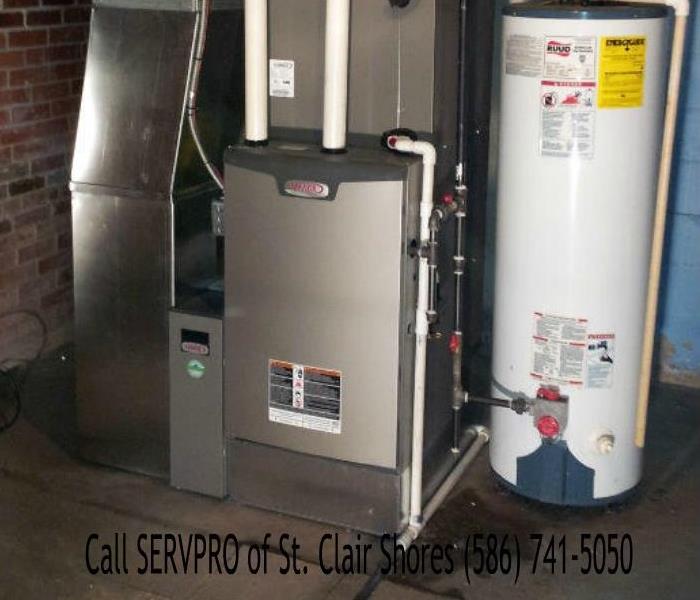 Don't let mold attack! Call us @ SERVPRO of St. Clair Shores
Don't let mold attack! Call us @ SERVPRO of St. Clair Shores
Keep Mold and Moisture Out of Your HVAC System
In the warm summer heat, it's easy to build up moisture; especially when it gets sticky, muggy and humid. When this happens, you naturally crank the A.C., reach for something cold, and kick back in your lazy chair. The problem is, when you're relaxing and enjoying the nice cold breeze, the mold is spreading through your ducts, vents, and HVAC system, leaving a nasty haze of mold that you can smell all over the house. If you're running a business, your customers could smell it too- which is why you should always call our service professionals to deal with the problem as soon as possible.
How Does Mold Get in The HVAC System?
Mold damage is no laughing matter. Mold, fungus, and other bacteria are in their perfect environment when they're trapped in your HVAC system. It's dark, warm, moist, closed in, and humid, meaning that spores can grow practically unabated. You'll notice more and more scent as heat and humidity is generated from outside and pulled through your ducts.
When this moist air gets in your air system, it collects within and above your HVAC units. At this point, the spores of mold and other fungi easily rise through the air, setting up colonies as your condenser forces them up through the duct system. These aren't the only cases of mold that we've seen at SERVPRO; we've seen mold stick to people's clothes or shoes, and it's all brought inside by excess humidity caused by rainfall.
Here Are a Few Tips on How to Remove Mold from Your HVAC System
- Continue to clean and maintain your HVAC system, even when you aren't using it. Check the ducts for wet spots, and regularly check and maintain your HVAC filter.
- Double check the drainage systems on your HVAC for mold. Allow for "dry-out" areas where the drainage comes out to prevent excess moisture.
- Get dehumidifiers for your home. They are ideal for collecting excess humidity, and they help with the temperature inside your house, too.
- Always insulate your pipes, walls, and ceilings. Use caulking for cracks to control cracks and leaks.
- Contrary to common beliefs, keep your windows closed when it's hot outside. Humidity, dust, and dampness easily travel inside.
If you already have existing mold and mildew issues remember SERVPRO of St. Clair Shores! We are always Here to Help @ (586) 741-5050.
Dry Rot in Home in Roseville, MI
4/11/2018 (Permalink)
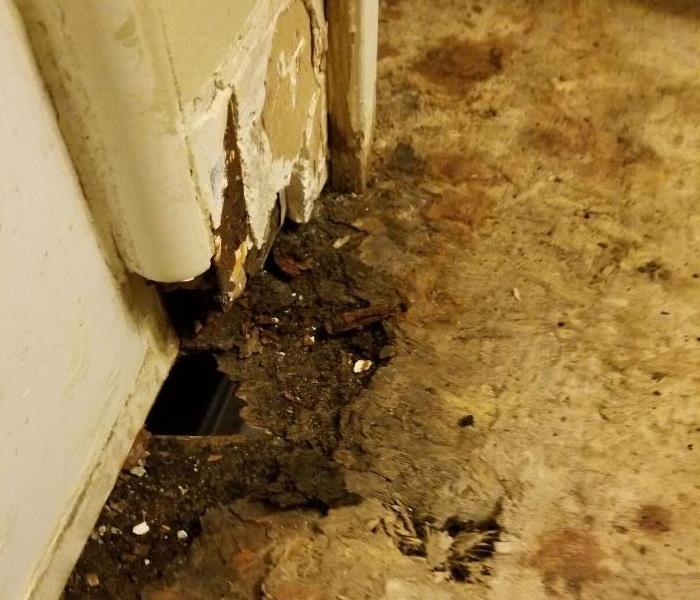 Dry Rot from Bathroom Sink in Roseville, MI
Dry Rot from Bathroom Sink in Roseville, MI
Your home is most likely one of your greatest investments. To protect your investment, it is important to be able to spot small problems before they become major expenses. Dry rot is one of those problems.
Dry rot is caused by a fungus that feeds on wood and weakens it. Wood becomes cracked and brittle and eventually breaks down. Dry rot is particularly a problem in older homes where wood may not have been treated to prevent rot damage.
Here are three things you should know about dry rot:
1) Where to look for dry rot.
Dry rot may sound as though it’s misnamed because fungus needs moisture to grow. Look in areas of your home where there is a water source.
Outside, you may find rot where there are damaged gutters or downspouts. Areas to check for rot include:
- Wooden window sills.
- Where water runs off the roof along with a wall.
- Where a deck attaches to the home.
- Where a vertical surface meets a horizontal surface.Inside, look for dry rot in areas where there may be a leaky pipe, unvented attic space, and damp basements or crawlspaces. Look for areas where drywall is water stained. Other areas to check include:
- Look for cracks, splits, and discoloration, which may indicate the presence of rot. Check the roof, especially areas where your home may have had a leak. Dry rot can also occur at points of a structure where wood meets the ground.
- Rim joists, especially on a porch, crawlspace or basement.
- Where wood meets a masonry floor or wall.
- The floor around a tub or toilet.2) What to do if you discover dry rot.Once you have found the source of moisture, repair the problem. If there is severe damage, pry off and replace the old wood. Be sure to temporarily support any structure before removing the old wood. Small areas of rot can be repaired with epoxy resin. If the wood is still structurally sound and the source of the moisture has been stopped, you can treat the area with borate, a fungicide, to stop the growth of the fungus and protect the wood from further damage.Rot occurs when there is wood combined with high moisture. To prevent rot, there are several things you can do around your house:
- 3) How to prevent dry rot.
- Dry rot is progressive so you will want to make repairs as soon as possible. You will first need to stop the source of the moisture. Replace wood that has been structurally weakened, possibly with pressure treated wood. Be sure the problem is properly diagnosed and not mistaken for damage done by carpenter ants.
- You can check for rot with a pick or screwdriver. If it penetrates the wood or the wood flakes easily, there is rot. There may also be rot hidden behind flooring, drywall or siding, which may only be apparent by some discoloration or noticing the material does not feel structurally sound underweight or pressure.
- Properly ventilate and insulate your attic.
- Properly ventilate crawlspaces.
- Seal basement and crawlspace floors to reduce ground moisture.
- Check all wall and roof flashing to ensure water is being directed properly.
- Check deck and porch flashings.
- Keep wood siding and trims off the ground and away from the roof and masonry.
- Make sure all windows and doors are properly flashed.
- Keep up with painting and caulking.
- If there is considerable runoff near the house, consider installing a rain barrel to collect water or connecting your downspout to a drain tile that can move water a safe distance from your home.
- Keep drains and downspouts clear.
- Most importantly, treat dry rot as soon as it is discovered! Untreated dry rot can cause major damage to your home. Keep our phone number handy! Call SERVPRO of St. Clair Shores (586) 741-5050.
Ten Things You Should Know about Mold
10/20/2017 (Permalink)
Ten Things You Should Know about Mold
EPA.gov
- Mold can cause various health issues.
- There is no practical way to eliminate all mold and mold spores in the indoor environment; the way to control indoor mold growth is to control moisture.
- If mold is a problem in your home or school, you must clean up the mold and eliminate sources of moisture.
- Fix the source of the water problem or leak to prevent mold growth.
- Reduce indoor humidity (to 30-60%) to decrease mold growth by:
- Venting bathrooms, dryers and other moisture-generating sources to the outside
- Using air conditioners and de-humidifiers
- Increasing ventilation
- Using exhaust fans whenever cooking, dishwashing and cleaning
- Clean and dry any damp or wet building materials and furnishings within 24-48 hours to prevent mold growth.
- Clean mold off hard surfaces with water and detergent, and dry completely. Absorbent materials such as ceiling tiles, that are moldy, may need to be replaced.
- Prevent condensation: Reduce the potential for condensation on cold surfaces (i.e., windows, piping, exterior walls, roof, or floors) by adding insulation.
- In areas where there is a perpetual moisture problem, do not install carpeting (i.e., by drinking fountains, by classroom sinks, or on concrete floors with leaks or frequent condensation).
- Molds can be found almost anywhere; they can grow on virtually any substance, providing moisture is present. There are molds that can grow on wood, paper, carpet, and foods.
To eliminate an existing mold problem, call the experts at SERVPRO of St. Clair Shores (586) 741-5050.
What Are Mold Spores? Why is Treatment Important?
10/20/2017 (Permalink)
What Are Mold Spores? Why is Treatment Important?
Mold is challenging to eliminate due to its ability to grow in wall cracks, carpet fibers and other difficult-to-reach areas. The answer lies in mold information about spores, which are the reproductive unit of molds and other fungi.
Are you puzzled how something so minute can cause building damage and health problems? Here is some helpful mold information explaining what spores are and the role they play in home and building infestations.
Characteristics of mold spores
You might not realize it, but you're surrounded by spores, both indoors and outdoors. They range in size from three to 40 microns, less than half the width of a human hair, allowing them to float in the air sight unseen.
Mold acts as nature's "recycler", feeding on dead and decaying organic material such as trees and plants, so spores often come from farm land, parks and other places rich in vegetation. Spore counts are higher after extended rainfall or in areas of high humidity.
How spores cause the spread of mold
As mold spores drift through the air, they eventually come to settle on a surface. Mold information indicates that it requires nutrients, moisture and the right temperature to grow. If the conditions are right, the spores begin generating thread-like cells called hyphae, which absorb nutrients allowing mold to grow.
Importance of treatment
According to mold information from the EPA, eliminating spores altogether is impossible, so you need to control the conditions that create mold growth. The easiest and most effective method is to reduce the amount of moisture in your home or business.
If you do find a mold infestation, it's best to have it treated professionally. You can find mold information about cleaning with over-the-counter products, but it often serves only to disperse mold spores so mold can become established in another area.
The best mold treatment is clean-up and prevention
Effective mold treatment is a two-step process. The existing mold needs to be eliminated, and methods have to be implemented to protect against future infestations. Non-toxic removal followed by application of a polymer sealer that repels mold is fast and highly effective. Call us today for a free inspection at (586) 741-5050.
What happens if you do not clean up after a flood?
6/19/2017 (Permalink)
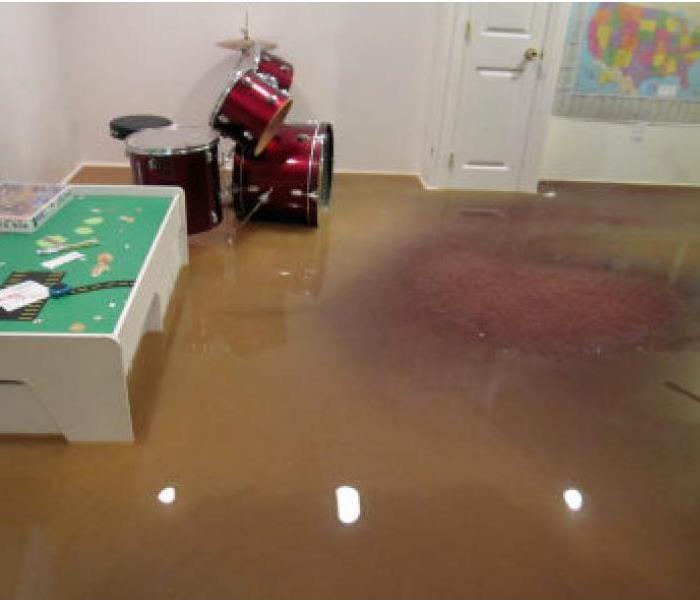 MOLD
MOLD
What Happens if You Don’t Clean Your Home After a Flood?
Erin Doman on May 4, 2016
Failure to completely clean up your home after a house flood can lead to severe and costly damage that can affect the hidden corners of your home without you even realizing it. Not only can this damage the structural integrity of your home, but it can lead to costly repairs for your electrical system, HVAC, etc.
Above all, failure to clean up after your house floods can create perfect conditions for mold to grow, which can lead to illness. Mold can be unpleasant–even dangerous, for some people. Mold can cause severe allergy symptoms as well as lead to asthma, which is particularly dangerous for children and the elderly. However, there are things you can do to prevent the growth of mold after a house flood, including the use of special equipment, chemicals, and utilizing a professional company, like SERVPRO of St. Clair Shores.
It is a smart idea to invest in an air purifier to prevent the growth and spreading of mold spores.Air purifiers can help keep your indoor air free of more than just mold spores. These appliances can also remove unpleasant odors, pollen, pet dander and more from your air, which helps promote a healthy home. It is recommended that anyone who experiences allergies or asthma symptoms invests in an air purifier.
Leave on the Air Conditioning to Avoid Mold
6/19/2017 (Permalink)
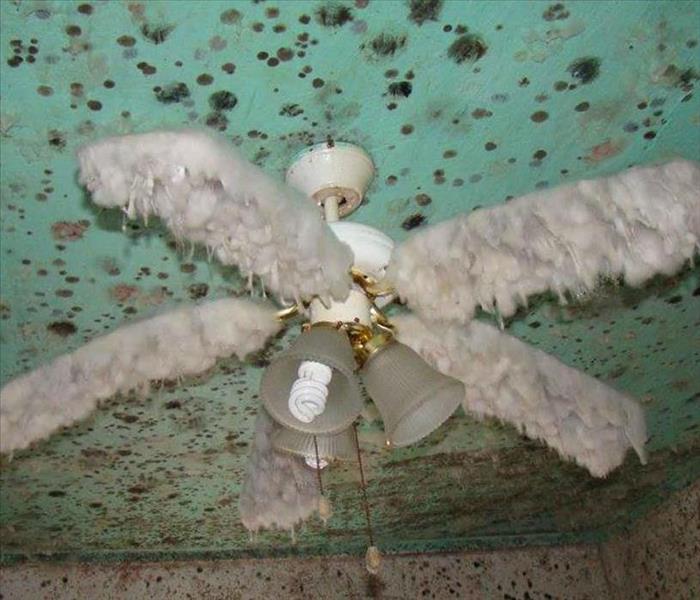 Leave on the Air Conditioning to Avoid Mold
Leave on the Air Conditioning to Avoid Mold
Leave on the Air Conditioning to Avoid Mold
Leaving the air conditioning running in your home will not only cool your home, it will help remove moisture from the air and help circulate and filter the air. By: Dwight Barnett Air Conditioner featured Outside of Home
Leaving the air conditioning running in your home will not only cool your home, it will help remove moisture from the air and help circulate and filter the air.
Question: In the process of selling my home, the buyers requested a home inspection. My problems started when the mold inspector reported elevated spores were four to five times the amount found outside. After paying a contractor to clean and treat for molds, the follow-up test showed the levels were even higher. The buyer refused to complete the deal. What made the mold grow so fast, and did we get ripped off by the contractor? A.N., Evansville, Ind.
Answer: With a little investigation, I was able to gain some additional information about the sale of your home. It seems that soon after the initial inspection, the home was left vacant with the utilities off. The resulting enclosed dark and damp environment created an almost perfect situation for mold spores to grow.
In the summer, a closed house with the air-conditioning turned off will have higher humidity levels than an air-conditioned home. A vacant house also receives little or no sunlight through closed shades and no air movement with the fan off and the doors locked.
If you had simply left the air conditioning running, it would have cooled the home and removed moisture from the air and circulated and filtered the air.
Molds thrive when the humidity levels exceed 70 percent. Because humidity levels vary from day to day, the thermostat should have been left at or below 74 degrees, and the fan should have been set to "On."
Normally, mold cleaning and remediation processes disturb the spores, which become airborne and can settle on unclean or untreated surfaces, where they continue to thrive in the humid, warm, dark conditions.
In my opinion, the remediation contractor failed you in that he did not warn you of the potential for recontamination.
The Environmental Protection Agency suggests that self-cleaning should be considered if the area to be treated is less than 10 square feet. A guide to treatment and cleaning is available at http://www.epa.gov/mold/index.html. You can also learn more about mold remediation contractors and remedies for contaminated buildings.
An article by Dr. Ronald E. Gots that appeared in The Laker magazine underscores the myth surrounding phobias about molds and mold contamination.
Basically, the article states that there are no scientific studies that show molds are unhealthy at typical indoor levels. Reactions to molds that have been documented are: allergic responses, minor irritant effects and infections in individuals with impaired immune systems.
Molds present at typical indoor levels have never been scientifically shown to cause any other illness.
Even when mold spores were at elevated levels, there were no similar elevated reports of illnesses. Examples from the article show certain occupations that are exposed to extremely high concentrations of mold spores.
What is Mold?
6/19/2017 (Permalink)
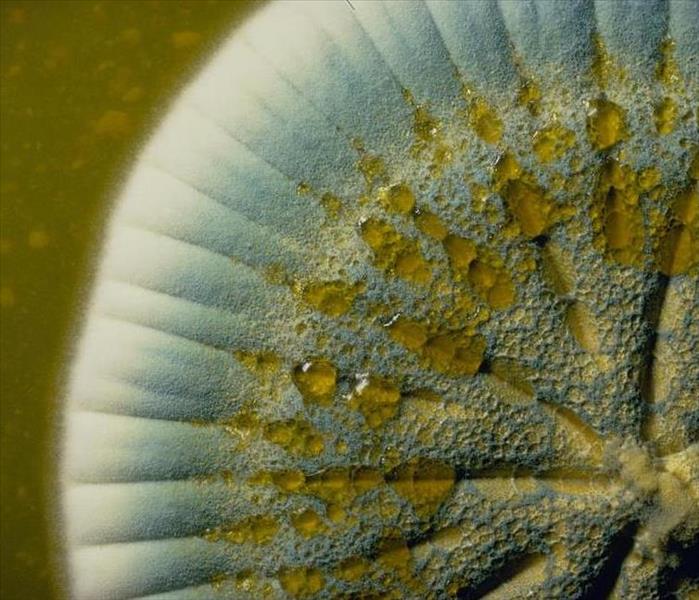 What is Mold?
What is Mold?
What is Mold?
Mold (or mould) is a term used to refer to fungi that grow in the form of multicellular thread-like structures called hyphae. Fungi that exist as single cells are called yeasts. Some molds and yeasts cause disease or food spoilage, others play an important role in biodegradation or in the production of various foods, beverages, antibiotics and enzymes.
Mold is also found in damp building materials where it often appears like stains and comes in a variety of colours. A must smell is an indication of microbial growth even when there is no visible growth. If mold is allowed to grow in homes or offices it can contribute to poor indoor air quality. Some molds such as the Dry Rot Fungus, Serpula lacrymans, are highly destructive. For more details about dry rot fungus read Occurrence and Significance of Dry Rot Fungus, Serpula lacrymans.
Mold growth requires moisture. The sources of moisture could be Washing, cooking, air humidifiers, condensation or leaks from plumbing or from the outside. Poor ventilation contributes to higher humidity levels and leads to condensation, which also allows mold growth.
Molds release small “spores” into the air. So, when mold grows indoors, the number of mold spores and fragments is usually higher indoors than it is outdoors. These spores are small enough that people can actually inhale them deep into the lungs. Inhalation of spores poses risk of developing respiratory problems. With the exception of winter months mold spores are always present outdoors.
Give us a call at SERVPRO of St. Clair Shores for an inspection at your house or business if you suspect a problem at (586) 741-5050.
Is Mold A Health Risk?
6/13/2017 (Permalink)
Is Mold a Health Risk?
Written By: Tricia Ellis-Christensen
Some types of mold can be a health risk for some people. People's reaction is highly variable and is dependent upon the type, as well as how much of it exists in the home. It is clear that some people are allergic to mold. Further, some populations are more susceptible to the negative effects from exposure. Those who have allergies, asthma, or pulmonary conditions may be more susceptible, as well as children and infants. Those with suppressed immune conditions may risk developing fungal infections in the lungs due to lengthy mold exposure.
The primary response to mold is an allergic response. Not all people are sensitive in this way, just as not all people are allergic to pollen. In minor forms, exposure can cause hay fever symptoms like runny nose, itchy eyes, and sore throat.
Some people develop asthma as part of an allergy response to mold. This is one of the severe symptoms of allergy. Asthma can be dangerous and can become progressively worse if exposure continues. When possible, those who have an asthma response should have their environments as mold-free as possible. However, this can be challenging.
One can generally clean the mold one can see, such as that which exists on walls. There is plenty that we don’t see, both indoors and out that may cause health issues. Proper ventilation is of utmost importance. Air purifiers may help reduce airborne spores that one can't see. Keeping it from regrowing by wiping down windows if they become moist, and keeping bathrooms clean may also help reduce mold in the home environment. Bathrooms should never be carpeted, as carpet can harbor mold and be difficult to clean.
An allergic response can also lead to greater risk for sinus infections. In fact, those who appear to have chronic sinus infections without a viral cause may in fact be expressing allergies to mold.
The greatest danger is the possibility of developing fungal infections in the lungs. This generally only occurs in those with weakened immune systems. Fungal infections can be challenging to treat, and are worsened when one already has a suppressed immune system. Anti-fungal medications can treat fungal infections, but many of them have adverse side effects.
One type, Stachybotrys chartarum, is sometimes called toxic mold. It tends to develop after a home has been flooded. People do show a higher allergic response to it, and it should be eliminated as soon as possible.
To eliminate an existing mold problem, call the experts at SERVPRO of St. Clair Shores (586) 741-5050.
The Importance of Dehumidifiers
6/7/2017 (Permalink)
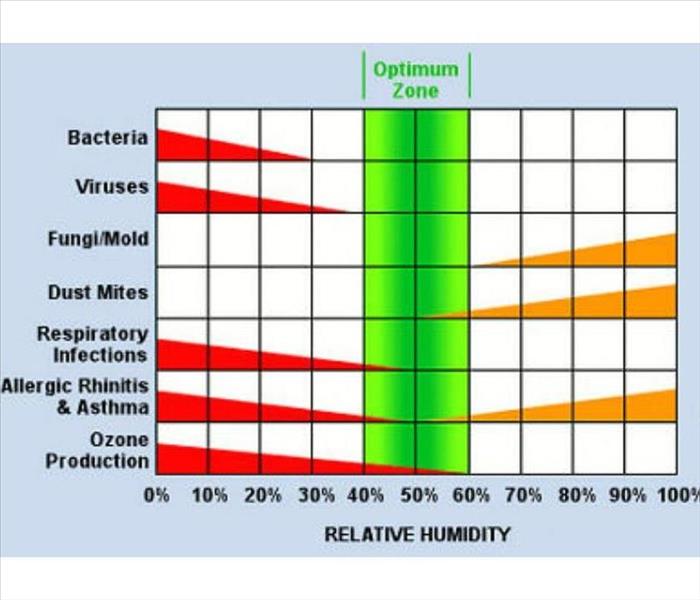 Humidity Chart
Humidity Chart
The Importance of Dehumidifiers
To help avoid health problems for your family and structural problems for your home, it’s important to maintain a proper humidity level in your home. Too much moisture can create an environment that’s ideal for allergens such as mold, mildew and dust mites. Mold and mildew can thrive inside the walls and beneath the flooring. Many types of mold are potentially dangerous and can lead to many health problems. Excess moisture can aggravate conditions such as arthritis and rheumatism and higher dust mite activity can increase the risk of asthma. If you have a basement, it is especially important to continuously run a dehumidifier during the summer months. A dehumidifier can help you eliminate excess moisture problems.
If you already have existing mold and mildew issues remember SERVPRO of St. Clair Shores! We are always Here to Help @ (586) 741-5050.
Mold Prevention During the Winter Months from SERVPRO of St. Clair Shores
10/13/2016 (Permalink)
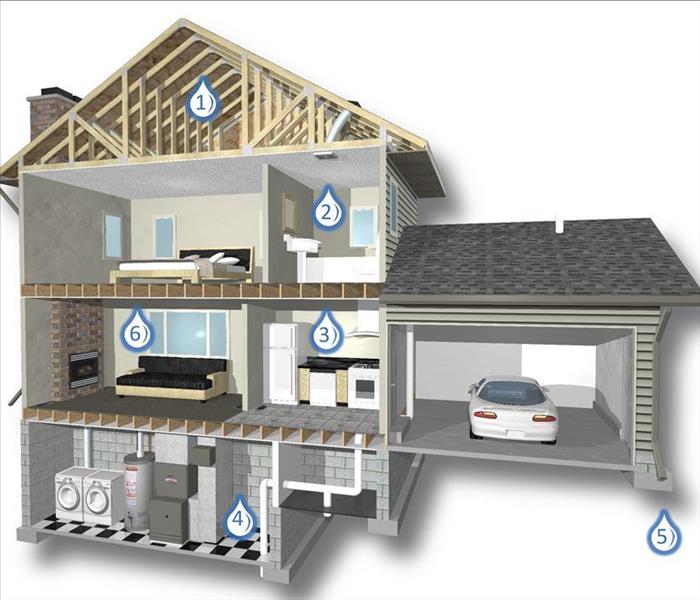 Mold Prevention for this Winter
Mold Prevention for this Winter
Mold Prevention During the Winter Months from SERVPRO of St. Clair Shores
The wet season in the winter months is one of the best times of year for molds to grow and expand. Often mold is contained near sources of water where it can easily grow and reproduce. As it grows, mold can breakdown and compromise the integrity and strength of the source in which it lives.
Mold spores are microscopic and are naturally found in the air we breathe indoors and outdoors. When large amounts of spores grow, one’s health may be compromised. Mold can be killed, but if it is not removed properly, it can remain in the area just cleaned and the dry spores can be released into the air. Mold remediation services can help eliminate the mold in your home and personal items affected by water damage.
Prevention, however, is what will help keep your lungs healthy and homes and buildings strong. We’ve put together a few tips on how you can help prevent mold from infesting your home that are efficient and realistic:
General Home and Building Maintenance:
- Keep all areas clean.
- Make sure there is good air circulation. Use an exhaust fan or open a window when showering, cooking, and washing the dishes.
- Prevent mold and water damage by turning off the water flow to broken appliances and pipes.
- Replace cracked or defective mortar in basements. If you find your basement is wet or has water leaking into it, inspect the outside drainage systems.
- Spread moisture-barrier materials in crawl spaces over the soil. Heavy roofing paper or plastic film made of polyethylene can be used for this. Make sure there is good ventilation in the crawl space and, if possible, do not enclose it. One may need to use a fan to blow out humid air from under the building.
- One can get rid of humidity or dampness within a building by heating it for a short time. After heating, open up the doors and windows, or use an exhaust fan, to let out the air that is moist.
- Hire a professional contractor, like SERVPRO of St. Clair Shores to cover a damaged roof with a tarp or tent. This will help protect the building from the elements.
- If there are freezing temperatures, take measures to insulate pipes inside and out to ensure they will not crack and/or burst.
- Make sure all the seals on the windows and doors are not compromised and in good-working condition.
- Clean and repair roof gutters regularly.
- Make sure the ground around your building slopes away from the foundation so water does not collect around or enter in to it.
- Act quickly if you see condensation on windows, pipes, or walls inside a building. Dry out the area and determine if the source of the condensation is from a leak or the result of high humidity.
After a Flood or Heavy Rains:
- Work fast. Call in a mold remediation service, like SERVPRO of St. Clair Shores which will help in the cleaning and disinfecting of your home from toxins and spores mold can release.
- Lower the humidity and temperature in the building: molds do not like these conditions. Open up windows if the air outside is less humid than the air inside. Otherwise, turn on an air conditioner and a dehumidifier.
- Dispose of moldy items in a sealed bag. Objects that can be saved should be frozen (which deactivates mold) or dried out. Our mold remediation services partners can assist with restoring many of your items, including documents, pictures, and books.
- Make sure there is good ventilation within the building affected. Use a fan, if necessary, to promote good air circulation.
- Remove as much standing water in a building as quickly and safely as possible after disconnecting all electronic equipment inside the building.
- The two key things to remember in mold prevention are: 1. Keep everything clean, and 2. Keep everything dry. Many simple steps can be taken to prevent mold damage as well as water damage during the winter months. However, keep our number, (586) 741-5050 for mold remediation services handy should you require our services. We can efficiently and quickly ensure your home is safe, dry, and mold-free. Visit us online at http://www.SERVPROstclairshoresmi.com
Tips to keep Mold from growing in your house.
7/21/2016 (Permalink)
Below are some great tips for you to try in your house if you want to steer clear of inviting Mold into your home. If you have any questions we are always Here to Help at SERVPRO of St. Clair Shores at (586) 741-5050.
Specific Recommendations:
- Keep humidity levels as low as you can—no higher than 50%--all day long. An air conditioner or dehumidifier will help you keep the level low. Bear in mind that humidity levels change over the course of a day with changes in the moisture in the air and the air temperature, so you will need to check the humidity levels more than once a day.
- Use an air conditioner or a dehumidifier during humid months.
- Be sure the home has adequate ventilation, including exhaust fans.
- Add mold inhibitors to paints before application.
- Clean bathrooms with mold killing products.
- Do not carpet bathrooms and basements.
- Remove or replace previously soaked carpets and upholstery
What is Mold? Where does it come from?
7/17/2016 (Permalink)
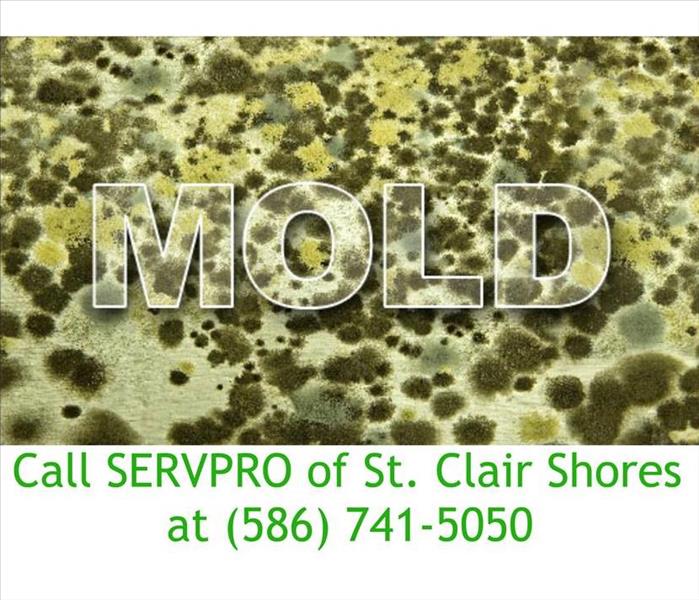 Mold Facts!
Mold Facts!
The Facts about Mold: For Everyone
What is mold?
The term “mold” is a colloquial term for a group of filamentous fungi that are common on food or wet materials. This includes the green Penicillium species that produces penicillin, and fungi that spoil our bread, fruit, cheese and crops. Most of these are Ascomycetes that produce a lot of spores.
The majority of the molds that grow on damp building materials are found in the soil and are adapted to grow on a wide variety of materials. Outdoors, molds live in the soil, on plants, and on dead or decaying matter. There are thousands of species of mold and they can be any color. Different mold species are adapted to different moisture conditions ranging from very wet to just damp. Many times, mold can be detected by a musty odor. Live spores act like seeds, forming new mold growths (colonies) under the right conditions. All of us are exposed to a variety of fungal spores daily in the air we breathe, both outdoors and indoors.
How mold gets into a house or building
Mold and fungal spores occur naturally outdoors, where fungi are the earth’s most important recyclers. Indoors, mold needs moisture to grow; it becomes a problem only where there is water damage, elevated and prolonged humidity, or dampness. Common sources of excessive indoor moisture that can lead to mold problems include:
- flooding from surface waters (i.e., overflowing rivers) or from severe storms;
- roof leaks from damaged or missing roofing materials, ice dams or blocked gutters;
- storm-driven rain through window frames, exterior walls or door assemblies;
- leaking pipes, sewer back-ups or overflows;
- damp basements or crawl spaces due to a high water table or poorly managed rainwater drainage; and
- condensation on cold surfaces.
How to prevent mold growth
The key to preventing and stopping indoor mold growth is to control excessive moisture and condensation. Keeping susceptible areas in the home clean and dry is critical. In general, mold will not grow indoors without water, dampness or excessive moisture.
Three main factors contribute to condensation of water on building surfaces:- Relative Humidity: Condensation occurs when the air is saturated with water and it cannot hold any more moisture. For example, steam generated from bathroom showers or from cooking can fill up the air with moisture, which will then condense into drops of water on cooler surfaces, such as mirrors and windows. Where possible, localized sources of humidity, such as clothes dryers, should be directly vented to the outdoors. To lower indoor humidity during warm, humid weather, air conditioners and/or dehumidifiers should be used. In chronically damp areas such as basements or crawlspaces, it is often recommended that dehumidifiers be used to maintain humidity levels below 60 percent.
- Temperature: Warm air holds more moisture than cold air. Condensation occurs when warm humid air comes into contact with a cold surface and the moisture condenses into water. This can often be seen on single-pane windows, where water condenses and then runs down, causing the wood frames and sills to rot and the wall under the windows to blister. Condensation can occur on exterior walls, particularly north-facing walls, if they are not properly insulated. Other chronically cold surfaces, such as cold water pipes, should be covered with insulation to help prevent condensation.
- Poor Ventilation: Indoor humidity can build up if there is not enough ventilation and exchange of indoor and outdoor air. Where there is little or no air movement, such as behind dressers and cabinets, surfaces can remain cooler than surrounding areas, which can lead to increased condensation and mold growth. It is recommended that the area be ventilated and the occupants use exhaust fans (vented to the outdoors) to remove moisture from high-humidity areas, particularly in bathrooms, kitchens and laundry areas. Furniture should be moved slightly away from walls so that air can freely pass behind it. Air should be allowed to circulate between rooms and regularly ventilate to remove humid air. Fans should be used as needed.
Other things that can be done are to clean and repair gutters regularly, make sure the ground slopes down and away from the home’s foundation and keep air conditioner drip pans and drain lines clean. In addition, in air conditioned buildings in hot and humid climates, vinyl wall coverings on the interior sides of exterior walls should not be used, as these materials can trap moisture, resulting in mold growth underneath them.
In the case of floods or leaking pipes, any standing water should be promptly removed and water-damaged materials should either be dried out and cleaned, or removed and replaced. Porous materials that are wet for more than 48 hours are likely to produce mold growth and should be discarded. In instances where the water damage is extensive, it is recommended that professional help, such as calling SERVPRO of St. Clair Shores, be consulted.
We are available 24/7 for your emergency needs. Give us a call today at (586) 741-5050.
Cleaning Stains off Concrete Patios or Driveways
7/6/2016 (Permalink)
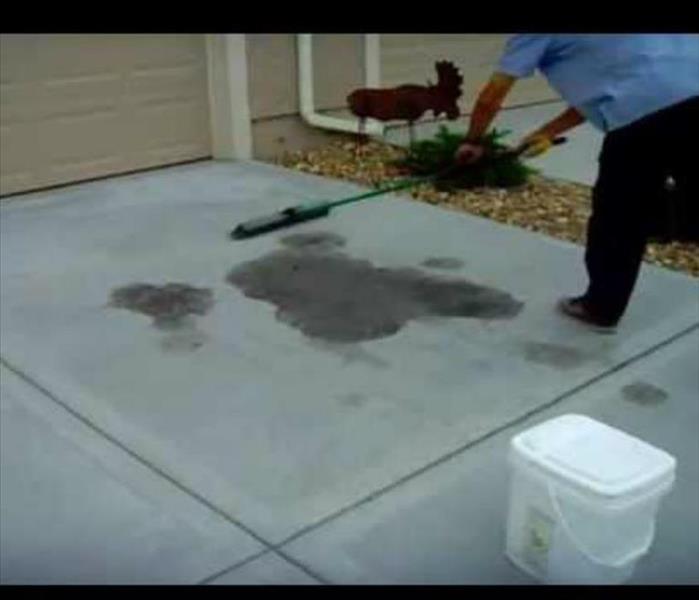 Cleaning Stains on Concrete
Cleaning Stains on Concrete
Easy ways to clean stains off concrete patios or driveways November 20, 2005|By Al and Kelly Carrell, King Features Syndicate For more info: http://articles.orlandosentinel.com/2005-11-20/business/HANDY20_1_stains-water-dispenser-muriatic-acidConcrete is a tough surface, but because it is porous, it's easily stained. Most spots are easy to clean if you know the steps. Here are a few things you can use to renew your patio, driveway or front porch.
The most common stains are caused by oil or grease. The first step in removing an oil stain is to use mineral-spirits-based paint thinner to dissolve and break up the oil. Use a scrub brush to work the thinner into the stain. When the oil is loosened, cover the spot with absorbent materials, such as cat litter, cornmeal or sawdust. Leave it overnight and sweep it away, along with the stain, in the morning. Repeat if needed.
Another good general-purpose cleaner for concrete is TSP, trisodium phosphate. Follow the package directions for mixing. Along with a good scrub brush, the mix will remove a variety of tough stains.
For tougher stains, you might have to use muriatic acid. This should be diluted with water and must be used with caution. Always add acid to water rather than adding water to acid. A good general-purpose mixture could be 10 parts water to 1 part muriatic acid. Wear gloves, safety goggles and a mask to protect yourself.
Oxalic acid is also a good cleaner, especially for rust stains. It can be mixed with water and be effective. It also can be used to bleach the entire surface when you have cleaned off the stains.
One of the best things you can do to keep your concrete surfaces looking good is apply a sealer. It might need to be reapplied annually, but it will keep some of those stains from getting into the concrete.
We also have concrete cleaning products that we make at SERVPRO corporate if the tricks above do not seem to work. Give us a call for more cleaing advice at (586) 741-5050. We are always Here to Help at SERVPRO of St. Clair Shores.
6 Surprising Pool Maintenance Tricks and Tips
7/6/2016 (Permalink)
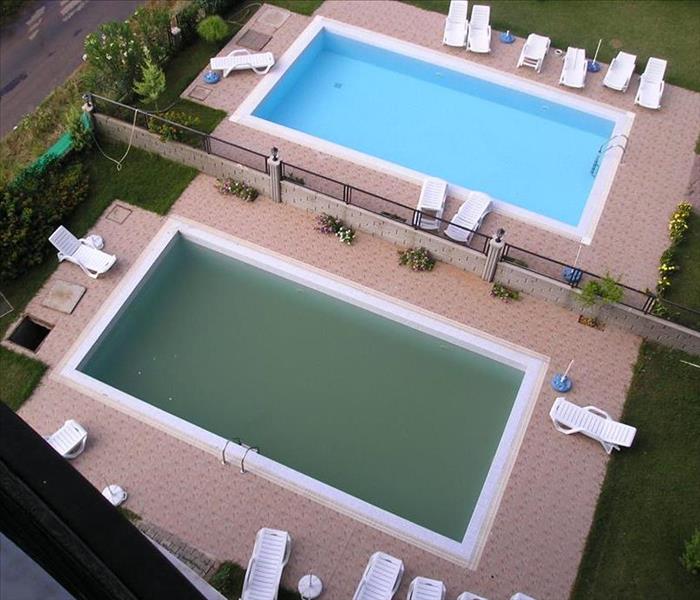 Tips and Tricks to Clean your pool.
Tips and Tricks to Clean your pool.
6 surprising pool maintenance tricksAnother great read from your friends at SERVPRO of St. Clair Shores, your cleaning experts! Call us for your home or business cleaning at 586-741-5050. In the meantime, here are some cleaning tips and tricks for your swimming pool!
Most pools require the same maintenance schedule, and as long as a pool owner completes the regular projects required of maintenance such as chemical care and cleaning, it’s easy to keep a pool in clear condition all summer long. There are a number of “unusual” additional activities you can employ to save you time, effort, and money in the long run resulting in an even cleaner pool. Check out these unique pool care tips and see if they inspire any other out of the box ideas.
1. Buy some baking soda
Stores that sell pool cleaner will usually offer something called an “Alkalinity Increaser,” which is a simple option for maintaining the pH levels in a pool. Purchasing some inexpensive baking soda from the store accomplishes the same goal yet does for much less money. An Internet search will tell you how much baking soda you will need for a pool your size.
2. Toss in a tennis ball
Suntan lotion and sun block often end up in the pool after they’re applied to a swimmer, and these substances can make the pool dirty quite quickly. Throwing a standard tennis ball into the pool to float for a while will suck up all those extra oils and chemicals that don’t belong in the pool. It’s fine to leave the tennis ball floating in the pool at all times.
3. Toe the tile line
Residue, dirt, and contaminants form over time and stick along the water line and tile area. Cleaning this area on a weekly basis should reduce the rate at which the pool gets cloudy and dirty since the residue on the tile doesn’t get washed into the pool. Weekly cleaning of this area also reduces calcium buildup. It’s also a good idea to clean the cement or walkways around the pool area to reduce the transference of dirt and grime into the water.
4. Keep dogs out
Dogs often love to jump in after their owners and play around in the pool, but chlorine isn’t good for canine companions. Not only will the pool irritate Fido’s skin, but the pool will get dirtier and hairier faster. Keeping up with dog hair in the filters may become a full time job in the summer with dogs in the pool. If the family just can’t stand to let the dog wait out the fun on the sidelines, the chlorine levels need to be kept below 3.0 PPM for safety.
5. Keep a cool pool
Pools cost energy to run and maintain, and keeping a pool above 82 degrees may offer a homeowner a much higher electricity bill. Instead of keeping the temperature so high, it’s less expensive to keep a solar cover on the water. There are also options for solar-powered pool heaters, which will also save energy.
6. Track water usage with a bucket
Although environmental factors such as humidity and temperature will impact the rate at which the pool loses water, the average water loss shouldn’t be much more than a quarter of an inch per day. Measuring water loss is easiest by placing a weighted bucket on the stairs and marking the water level on the side of the bucket. Big drops in water levels might signal a leak in the pool.
Using these easy and unique pool maintenance tips allows for a pool owner to have a cleaner pool each summer, which requires less maintenance and time spent pouring chemicals into the water. A clean and clear pool also offers a much more enjoyable swimming experience for the family. A well-maintained, regularly serviced pool will save you money in the long run.
How To Clean Your Air Conditioner Condenser Unit
6/8/2016 (Permalink)
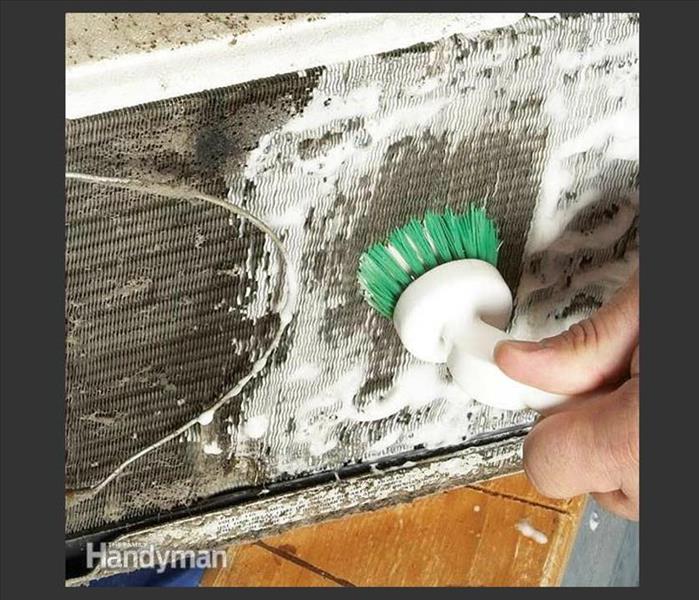 How To Clean Your Air Conditioner Condenser Unit
How To Clean Your Air Conditioner Condenser Unit
Overview: What you can do and when to hire a pro
Chances are that if you’ve neglected a spring checkup, your air conditioner isn’t cooling nearly as well as it could. A year’s worth of dirt and debris clogging the cooling fins, a low coolant level, a dirty blower fan filter and a number of other simple problems can significantly reduce the efficiency of your air conditioner and wear it out faster.
You can’t do everything; only a pro can check the coolant level. But you can easily handle most of the routine cleaning chores and save the extra $120 that it would cost to have a pro do them.
In this blog, we’ll show you how to clean the outdoor unit (called the condenser) and the accessible parts of the indoor unit (called the evaporator). All the steps are simple and straightforward and will take you only a few hours total. You don’t need any special skills, tools or experience. If you aren’t familiar with air conditioners and furnaces/blowers, don’t worry. We’ll walk you through the basics. See “Parts of a Central Air Conditioner,” below, to become familiar with how an air conditioner works and the parts of the system.
You may have a different type of central air conditioner than we show here—a heat pump system, for example, or a unit mounted horizontally in the attic. However, you can still carry out most maintenance procedures we show here, because each system will have a condenser outside and an evaporator inside. Use the owner’s manual for your particular model to help navigate around any differences from the one we show in our photos. And call in a pro every two or three years to check electrical parts and the coolant level.
Tip: Call for service before the first heat wave, when the pros become swamped with repair calls!
Figure A: Parts of a central air conditioner
The outside unit, called the condenser, contains a compressor, cooling fins and tubes and a fan. The fan sucks air through the fins and cools a special coolant, which the compressor then pumps into the house to the evaporator through a copper tube. The coolant chills the fins and tubes of the evaporator. Warm air drawn from the house by the blower passes through the evaporator and is cooled and blown through ducts to the rooms in the house. The evaporator dehumidifies the air as it cools it, and the resulting condensation drains off to a floor drain through a tube. The blower unit and ducting system vary considerably depending on whether you have a furnace (shown), a heat pump or some other arrangement. It may be located in the basement, garage, furnace room or attic.
Photo 1: Turn off the power
Turn off the electrical power to the condenser unit at the outdoor shutoff. Either pull out a block or move a switch to the off position. If uncertain, turn off the power to the AC at the main electrical panel.
Photo 2: Vacuum away debris
Vacuum grass clippings, leaves and other debris from the exterior fins with a soft brush attachment. Clear away all bushes, weeds and grass within 2 ft. of the condenser.
Realign bent or crushed fins with gentle pressure from a dinner knife. Don't insert the knife more than 1/2 in.
Unscrew the top grille. Lift out the fan and carefully set it aside without stressing the electrical wires. Pull out any leaves and wipe the interior surfaces clean with a damp cloth.
Spray the fins using moderate water pressure from a hose nozzle. Direct the spray from the inside out. Reinstall the fan.
Clean your outdoor unit on a day that’s at least 60 degrees F. That’s about the minimum temperature at which you can test your air conditioner to make sure it’s working. The condenser usually sits in an inconspicuous spot next to your house. You’ll see two copper tubes running to it, one bare and the other encased in a foam sleeve. If you have a heat pump, both tubes will be covered by foam sleeves.
Your primary job here is to clean the condenser fins, which are fine metallic blades that surround the unit. They get dirty because a central fan sucks air through them, pulling in dust, dead leaves, dead grass and the worst culprit— floating “cotton” from cottonwood trees and dandelions. The debris blocks the airflow and reduces the unit’s cooling ability.
Always begin by shutting off the electrical power to the unit. Normally you’ll find a shutoff nearby. It may be a switch in a box, a pull lever or a fuse block that you pull out (Photo 1). Look for the “on-off” markings.
Vacuum the fins clean with a soft brush (Photo 2); they’re fragile and easily bent or crushed. On many units you’ll have to unscrew and lift off a metal box to get at them. Check your owner’s manual for directions and lift off the box carefully to avoid bumping the fins. Occasionally you’ll find fins that have been bent. You can buy a special set of fin combs (from an appliance parts store) to straighten them. Minor straightening can be done with a blunt dinner knife (Photo 3). If large areas of fins are crushed, have a pro straighten them during a routine service call.
Then unscrew the fan to gain access to the interior of the condenser. You can’t completely remove it because its wiring is connected to the unit. Depending on how much play the wires give you, you might need a helper to hold it while you vacuum debris from the inside. (Sometimes mice like to over-winter there!)
After you hose off the fins (Photo 5), check the fan motor for lubrication ports. Most newer motors have sealed bearings (ours did) and can’t be lubricated. Check your owner’s manual to be sure. If you find ports, add five drops of electric motor oil (from hardware stores or appliance parts stores). Don’t use penetrating oil or all-purpose oil. They’re not designed for long-term lubrication and can actually harm the bearings.
If you have an old air conditioner, you might have a belt-driven compressor in the bottom of the unit. Look for lubrication ports on this as well. The compressors on newer air conditioners are completely enclosed and won’t need lubrication.
Step 2: Restart the condenser (outside unit)
Photo 6: Confirm proper cooling
Turn the power back on, then set the house thermostat to "cool" so the compressor comes on. After 10 minutes, feel the insulated tube. It should feel cool. The uninsulated tube should feel warm.
In most cases, you can simply restore power to the outside unit and move inside to finish the maintenance. However, the compressors are surprisingly fragile and some require special start-up procedures under two conditions. (Others have built-in electronic controls that handle the start-up, but unless you know that yours has these controls, follow these procedures.)
1. If the power to your unit has been off for more than four hours:
- Move the switch from “cool” to “off” at your inside thermostat.
- Turn the power back on and let the unit sit for 24 hours. (The compressor has a heating element that warms the internal lubricant.)
- Switch the thermostat back to “cool.”
2. If you switched the unit off while the compressor was running:
- Wait at least five minutes before switching it back on. (The compressor needs to decompress before restarting.) With the air conditioner running, make sure it’s actually working by touching the coolant tubes (Photo 6). This is a crude test. Only a pro with proper instruments can tell if the coolant is at the level for peak efficiency. But keep a sharp eye out for dark drip marks on the bottom of the case and beneath the tube joints. This indicates an oil leak and a potential coolant leak as well. Call in a pro if you spot this problem. Don’t tighten a joint to try to stop a leak yourself. Overtightening can make the problem worse.
Photo 7: Check the furnace filter
Turn off the power to the furnace at a nearby switch or at the main panel. Then pull out the furnace filter and check it for dirt buildup. Change it if necessary.
Photo 8: Vacuum and lubricate
Open the blower compartment and vacuum up the dust. Check the motor for lubrication ports. If it has them, squeeze five drops of electric motor oil into each.
Photo 9: Clean the drain tube
Pull off the plastic condensation drain tube and check it for algae growth. Clean it by pouring a bleach/ water solution (1:16 ratio) through the tube to flush the line. Or simply replace the tube.
Photo 10: Clean the drain port
Poke a pipe cleaner into the drain port and clean out any debris. Reinstall the drain tube and turn the power back on.
The evaporator usually sits in an inaccessible spot inside a metal duct downstream from the blower (Figure A). If you can get to it, gently vacuum its fins (from the blower side) with a soft brush as you did with the condenser. However, the best way to keep it clean is to keep the airstream from the blower clean. This means annually vacuuming out the blower compartment and changing the filter whenever it’s dirty (Photos 7 and 8).
Begin by turning off the power to the furnace or blower. Usually you’ll find a simple toggle switch nearby in a metal box (Photo 7); otherwise turn the power off at the main panel. If you have trouble opening the blower unit or finding the filter, check your owner’s manual for help. The manual will also list the filter type, but if it’s your first time, take the old one with you when buying a new one to make sure you get the right size. Be sure to keep the power to the blower off whenever you remove the filter. Otherwise you’ll blow dust into the evaporator fins.
The manual will also tell you where to find the oil ports on the blower, if it has any. The blower compartments on newer furnaces and heat pumps are so tight that you often can’t lubricate the blower without removing it. If that’s the case, have a pro do it during a routine maintenance checkup.
The evaporator fins dehumidify the air as they cool it, so you’ll find a tube to drain the condensation. The water collects in a pan and drains out the side (Figure A). Most tubes are flexible plastic and are easy to pull off and clean (Photos 9 and 10). But if they’re rigid plastic, you’ll probably have to unscrew or cut off with a saw to check. Reglue rigid tubes using a coupling, or replace them with flexible plastic tubes.
How to Easily Clean Kids Toys with Vinegar
6/8/2016 (Permalink)
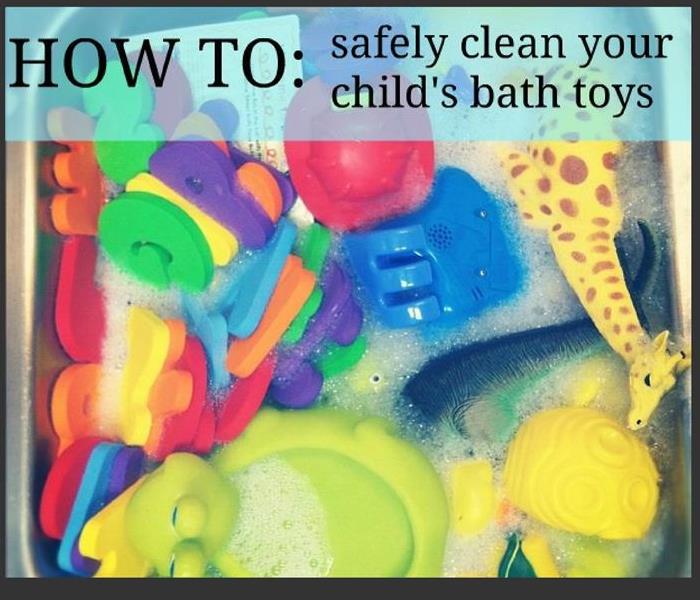 How to Easily Clean Kids Toys with Vinegar
How to Easily Clean Kids Toys with Vinegar
Cleaning Toys
Kid’s are pretty gross. I mean, they have their fingers in their nose a majority of the time, and then they put their boogers randomly all over the house. I’d rather touch a toilet than anything in a toddler’s toy chest, but maybe that’s just me. Check out this brilliant idea. Put them in the dishwasher! Bath toys could especially use a good rinse.
How to Easily Clean Kids Toys with Vinegar #HeinzVinegar by Hanan WebsterSchool has been in session for a couple of months now, play dates are moving indoors, and the littlest two attend the child-watch at the gym weekly, which means my kiddos are bringing home those kid germs, like it’s nobody’s business. With three kids, at least one of them always has a runny nose or another one of those pesky cold symptoms.
That’s why it’s especially important to try and keep their toys clean and germ free as much as possible. I have found, that with many of their toys and especially their Barbies, I can easily wash them all in either the dishwasher or with a cleaning spray.
We try and keep our cleaning solutions healthy and safe for not only our girls, but our dog too. Plus, you got to keep it “green” for environment, right? It’s so simple, just to use vinegar.
Over the weekend, we took a trip over to Walmart. We needed to pick up a few things, including some more vinegar, since we ran out of our last bottle. You can see our fun shopping trip pics over on my Google+ page.
Anyways, they had quite a selection to choose from, but what really stood out to me was Heinz Cleaning Vinegar.
What I like about vinegar, is that it is safe. You can use it throughout your home to clean laundry, surfaces, and even your produce.
Since going Paleo, we have been buying a ton more produce, and I have found that it is easiest to come home from our shopping trip, and wash all of it in the sink with vinegar and water.
Heinz Cleaning Vinegar is a cost-effective alternative to harsh cleaners and chemicals, which is also important. Especially if you like to clean often. Which I really don’t, but with having children, I still do.
Have you ever tried using vinegar to clean your children’s toys?
It’s really quite easy. You load up the dishwasher with anything that is plastic or rubber. Make sure not to put anything that uses batteries though. Then just add in 1 1/2 – 2 cups of vinegar and wash.
That’s it!
For those toys that can not be put into the dishwasher, you can create a Citrus Infused All-Purpose Cleaner. It can easily be used to spray and wipe down the bigger toys, or wooden ones.
Either way, it helps to clean your toys periodically, to eliminate germs in the home and keep our kiddos from getting sick.
Do you use vinegar at home? If so, what for? Let us know on Twitter @SERVPROSTORMY or give us a call today at SERVPRO of St. Clair Shores @ (586) 741-5050.






 24/7 Emergency Service
24/7 Emergency Service





